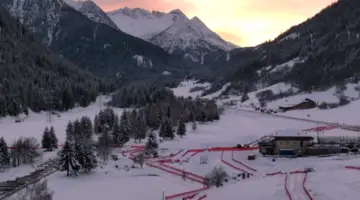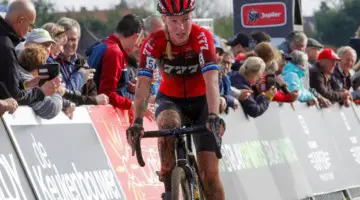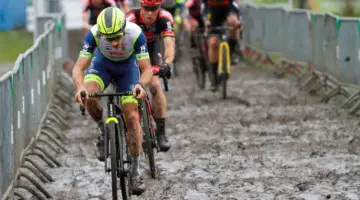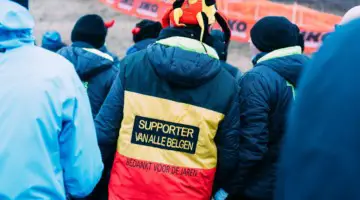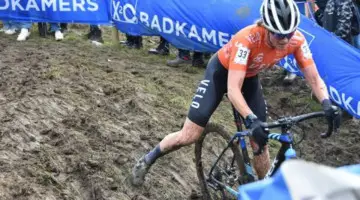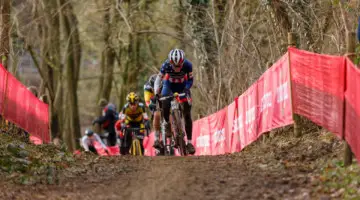The COVID-19 pandemic and protests against police brutality have had an undeniable impact on daily life for all of us. Bike racing and cycling sure seem insignificant during these times, and in the broader picture that includes these life-altering issues, it certainly is.
Yet cycling for many of us is also a (privileged) way of survival, of coping and briefly escaping the stresses.
With the majority of the races, group rides and other social events across the country on hold, there is a huge void in many of our cycling lives with no foreseeable ending.
We asked coaches Chris Mayhew and Corey Coogan Cisek how to deal with the vast emptiness that is the 2020 calendar so we can all come out on the other side mentally and physically healthy.
We hope you find their thoughtful answers helpful in navigating this unusual time.
Cyclocross Magazine: For a lot of people, the empty calendar is more than just a disappointment. With no direction how should riders put together a plan when there is nothing certain to plan for?
Corey Coogan Cisek: When COVID-19 first impacted our country, many Triple C racers deleted early races from their calendar and immediately refocused on races later in the spring. At this point, I think most of us are resigned to the fact that racing won’t be back soon. I still think there is reason to be hopeful for a cyclocross season, in some form.
In the meantime, I think it’s useful to establish some goals that are not race-related. Personally, I’ve found a lot of satisfaction in devoting training time to specific skills. I have a list I’m chipping away at: track stands, bunny-hopping, sand riding, etc. These are all skills that will eventually be helpful to me as a racer and that I’m excited to learn!
Chris Mayhew: I think the current plan for anyone has two parts. One is just making it through your day, in whatever form that takes. If cycling helps you with that then do it! But don’t feel like you have to train or slog through intervals if they’re a drain on your resources. So figure out what works best for you right now. If you’re trending towards “I want to train” then use Zwift or some less intense base-esque miles. If you just ride to stay sane then do whatever makes you happy on that front. Personally I am trying to mountain bike a bit more than I would because I find it very fun. I’m also using Wandrer.earth to have a goal for my rides and keep them interesting.
CXM: How important is to include hard efforts and structured training rather than just riding around?
CCC: It depends. As a coach, my first concern is for the mental health and wellbeing of my athletes. I strongly believe we need to work with, not against, the stressors and challenges in an athlete’s life. When the country first entered lockdown and the race calendar stopped, it was a highly stressful time for many. A lot of Triple C Coaching athletes took a pause on structured training for a bit. For those who had spent the winter on trainers ramping up for spring racing, this was a way to pull back, detrain a bit and then start training anew with later season goals. Others simply needed a break to manage life stressors without any training pressures. During this time, I encouraged riders to rest, walk, hike, ride, whatever…at their leisure.
As much as our “new normal” is anything but normal, it seems most Triple C athletes have reached some sort of homeostasis to new normal. In terms of training efficacy, yes, if we want to be ready for fall racing, structured training needs to happen at some point, earlier or later depending on an athlete’s goals and race schedule. From a mental standpoint, I think structured training may be more important than ever. We are facing some major losses to our cycling life: racing and group rides. Many of us find that structured training, workouts with specific goals, actually enhance our training joy. If you love racing and love competitive group rides, it’s a good indication that you appreciate regular challenges and achievement in your riding.
All that said, the choice whether to “just ride” or train depends on your personal situation. Are you bored, or at least rested, due to lack of social life, eating out? Or are you stressed due to job loss or trying to balance working from home and homeschooling? In the case of stressful times, just going out and riding as you feel is often the best choice.
CM: It’s best to think of intensity as a short cut, like turning up the heat on a strove. At some point, you need intensity to be prepared for many styles of racing. But every time you use it you’re turning up the heat a bit as you cook your fitness. It’s really easy to burn your fitness and peak too quickly or burn out. You can always add intensity and it doesn’t take much to get where you want to be. But if you add it too soon you may end up in a place you don’t want to be, at least not yet.
Right now I would discourage intensity. It’s taxing on the mind and body and you need to leave something in the tank for day-to-day life. And, if you do a month of intensity in May and racing doesn’t start till August your fitness is just going to sit on the table cold for a few months. Less is more right now. And my metaphors aren’t great.
CXM: Some of us have consumed a bit more and have exercised a bit less, putting on what some refer to as the COVID-15. What recommendations do you have for slowly reversing that trend? What are your thoughts on logging food?
CCC: Based on what I am seeing in the grocery store, it’s clear we are doing more cooking and eating at home than ever before. One thing I’ve noticed? Somehow fresh fruits and vegetables do not seem to be in short supply. If you are eating lots of healthy, homemade foods, and paying attention to fullness cues, your body should find its healthy set point.
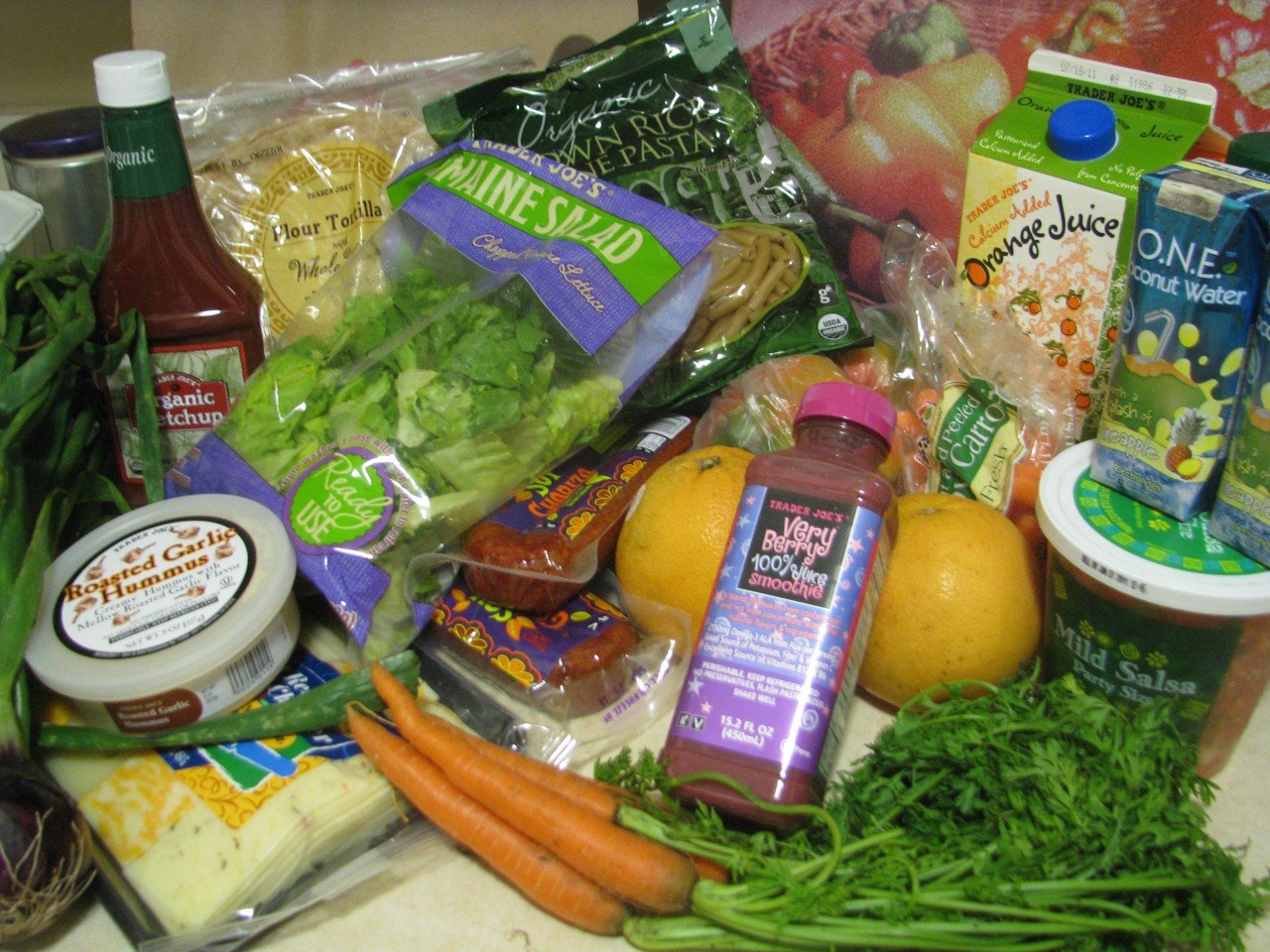
More eating at home could offer an opportunity for healthier eating than eating out. photo: Molly Hurford
Using an app for log foods? It depends. Using an app occasionally, perhaps for one week steadily and occasionally thereafter, can help you to become aware of and perhaps adjust your normal diet. However, for many of us Type-A athletes, myself included, daily tracking can lead to unhealthy compulsion and competition with oneself to eat less and less.
It’s also worth noting that it’s a pandemic! If you are up a couple of pounds, you can probably be forgiven, and you might choose to address this at a less stressful time.
CM: I think whatever you’re doing right now is fine, and if you put on weight that’s absolutely fine. The beach this year is going to be all about personality, as I read on Twitter. I think focusing on being mindful about what you’re eating and why is important. Are you bored? Eating your feelings? I am! Be aware of that. Are you thirsty? What could you, or I, be eating instead of sleeves of Oreos?
I think tracking your food, in general, is a good idea, with a few caveats. I don’t think it’s a good idea right now. Do you need another “should” on your plate right now?
The other caveat is to use tracking, not as a means of curbing how much you eat but making sure you’re eating the right things. Many cyclists over-consume carbs and under-consume protein. If you’re going to track food intake focus on making sure you’re eating enough calories overall to sustain training and within that getting the right macros. If you hit those and try to make them as quality as possible. Real foods instead of protein shakes all day! I think the weight and composition issues will take care of themselves.
CXM: There are some of us that actually enjoy intervals and hard efforts, and the lack of things to rest for is equally dangerous. Any advice on not going overboard?
CCC: The easiest, likely most effective answer is “hire a coach.” Being that I am a coach, in theory, I could coach myself, right? Yet, I don’t. The biggest reason for this is that my coach, Helen Wyman, pushes me and holds me back in turn. It’s really hard to modulate ourselves and we tend to make poor decisions. It’s easy to talk ourselves out of one more interval when it’s really hard. Conversely, it’s easy to overdo a recovery ride or “accidentally” make a loop too long.
Of course, there are ways to self-police yourself when it comes to overdoing it. Triple C riders have one day off and one easy day scheduled every single week. Personally, I have two easy days weekly, and every other week, one of these easy days is replaced with off-the-bike rest. Truth: Exercise is addictive and the closer you get to overtraining, the harder it is to take time off. I find having an easy and off-day weekly breaks that potentially addictive cycle. Big bonus: these easy/off days give you the mental bandwidth to push really hard on the hard days. The greatest overtraining/poor performance trap is going “sort of hard” every single day.
Measuring HRV via a tool like HRV4Training or WHOOP helps quantify recovery and note how hard training, lack of sleep, alcohol, etc. impact training. I find these tools are particularly helpful for athletes who tend to overschedule themselves and “burn the candle at both ends.”
“It’s really hard to modulate ourselves and we tend to make poor decisions. It’s easy to talk ourselves out of one more interval when it’s really hard. Conversely, it’s easy to overdo a recovery ride or “accidentally” make a loop too long.” -Corey Coogan Cisek
CM: If you like going hard you need to commit to some sort of outside accountability or a plan. For instance, every day I go hard means one easy day and one off day. No exceptions. Or, obviously, hire a coach to manage it. But to go back to the mixed heat metaphor above, you get more popcorn the longer you leave it in the microwave right up until you burn the whole thing. If you like to go hard that’s fine but you need to find some way to limit it and just winging that plan is not the way to go.
You could also use something like the Whoop or Garmin Fitness to give you objective feedback on what you should be doing.
CXM: What should we do to keep in a positive mindset so we’re ready when racing resumes?
CCC: Let’s get back to enjoyment. I don’t know anyone who started bike racing or group rides before they discovered the simple joy of riding a bike. We all fell in love with bikes first. Our wonderful ties to the cycling community and to races came later. We’ve lost a lot, but we haven’t lost the essence: riding a bike.
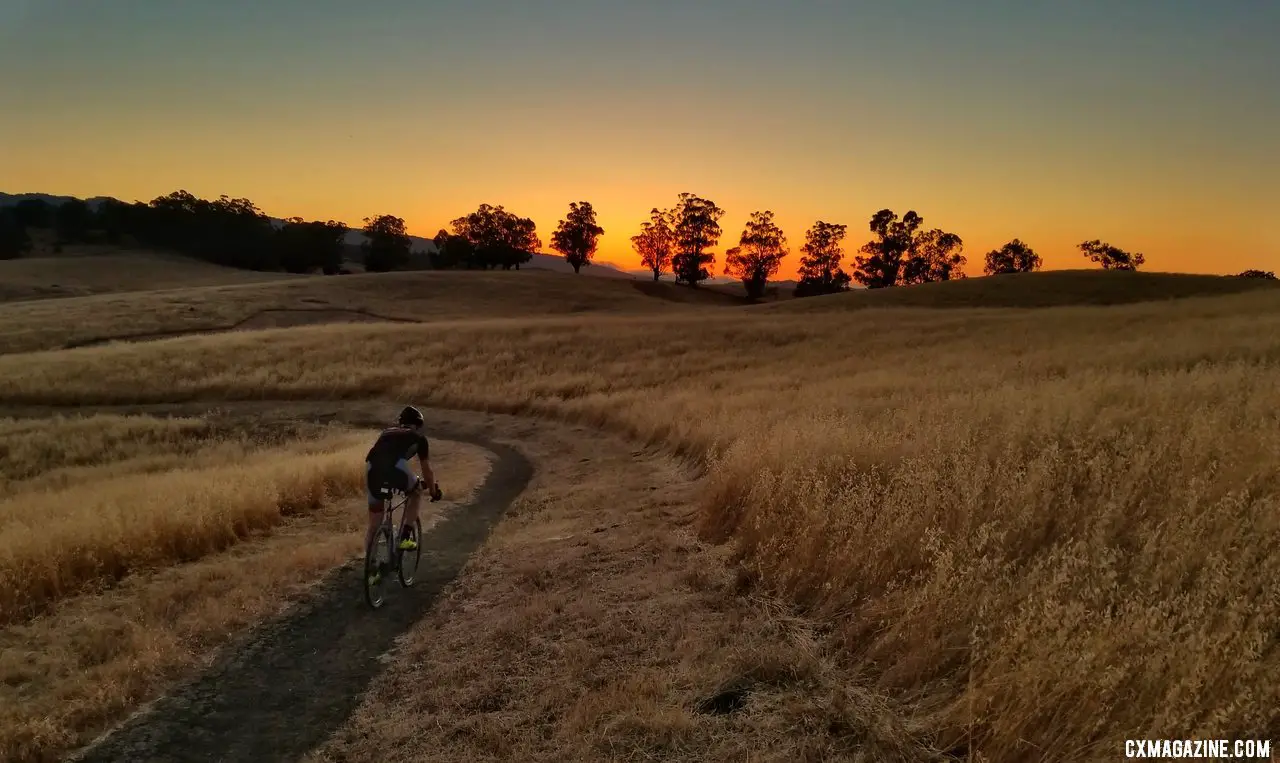
Now is a great time to reconnect with cycling outside of racing, and just enjoy the ride. photo: Andrew Yee
Prepare for your cycling future by creating meaningful, measurable goals that don’t hinge on racing. Dream about and research new avenues of cycling that might be available to you sooner than group rides and racing. Bikepacking, within our home area, might be something we are able to do this summer. Likewise, I think there’s massive potential for skills clinics. A small group, socially-distant clinic seems doable sooner rather than later. Consider COVID-19 as an opportunity to develop cycling interests and skills that last a lifetime.
CM: Be thankful for what you have. If you can ride a bike, much less race, you have an awful lot going for you. Write down every day three things you’re thankful for in your life. I have a bike. I have my health, I have the money to spend on racing, things like that.
Second, look at these hard times as a time to get better at things. Maybe you’re not good at being thankful. Maybe you’re burned out on racing and this is a good time to just enjoy riding your bike for pleasure and reconnecting with that joy. If you’re like me you have a lot more time on your hands. I’ve been working pretty hard on my core and some other weaknesses. The obstacle is the way. Crisis is an opportunity.
https://www.instagram.com/p/B-XolUAlOTV/
Lastly, focus on “get to.” So many people are in “I have to stay home” mode. You get to. A lot of people have to go to work or don’t have a home to say in. You don’t have to train or race bikes. You get to. If you can’t find and appreciate the get to in your everyday training and riding you need to take a long hard look at what you’re doing and why.
“Be thankful for what you have. If you can ride a bike, much less race, you have an awful lot going for you. Write down every day three things you’re thankful for in your life. I have a bike. I have my health, I have the money to spend on racing, things like that.” -Chris Mayhew
CXM: While there’s so much tragedy during these times, it’s also a chance for at least those who are healthy to reevaluate properties and reset goals. Some are dying to race, while others realize riding is really the priority, and racing is secondary, or a bonus. If race results aren’t a priority, how can a coach or a training plan still help a rider improve and get more enjoyment?
CCC: With the absence of normal challenges, namely racing and group rides, a training plan can provide its own engaging challenge. Assuming you have some physical and mental bandwidth in your life right now, striving for and meeting day-to-day training goals can be rewarding. Arguably, there are many elements of your life that are on hold at the moment. However, you can use this time to seek athletic growth.
A good coach will also significantly fast-track your learning. Even working with athletes from a distance via Training Peaks and online meeting tools, it amazes me the good questions athletes ask and how often I pass on little tidbits and tricks. Like most of us, I’ve learned a lot experientially, the hard way! As an athlete, learn as much as you can from coaches and mentors and less by making mistakes.
I also think this is a particularly good time for young riders to seek out coaching, whether via a junior development club (many clubs are doing online programming), a personal coach or a mixture of both. With distance schooling, decreased in-person social life and school sports canceled, many young adults have energy and time to burn. It’s a great time to expand their cycling horizons!

You may not get a hand on the shoulder during these times, but personal attention of a coach can still help you develop. photo: Geoff Proctor working with Yannick Eckmann at EuroCrossCamp in 2011
CM: I think right now the biggest role for coaches is a sports-specific therapist. You can talk about what you’re doing and going through. Your coach can help you identify solutions or just reassure you that what you’re experiencing is normal and common.
Beyond that, a coach can help you get more fit. That’s the easiest part of the job really, and the one people think about the most. The corollary of that is that coaches can help you on a path. Getting more fit is one path. Making fewer mistakes on the way to a goal, say riding a century or a week-long bikepacking tour, is another path. A coach has seen plenty of people do the same thing you’re doing and knows the common, and less common, errors people can make and help you avoid them. Put another way, you can watch a million YouTube videos and fix your own dishwasher. Or you can call a friend, have them come over, and walk you through it. The latter is coaching.
We thank Corey Coogan Cisek and Chris Mayhew for their input. You can learn more about their coaching services at tripleccoach.com and jbvcoaching.com.
Featured photo: Calder Wood at Montana Cross Camp by A. Yee























